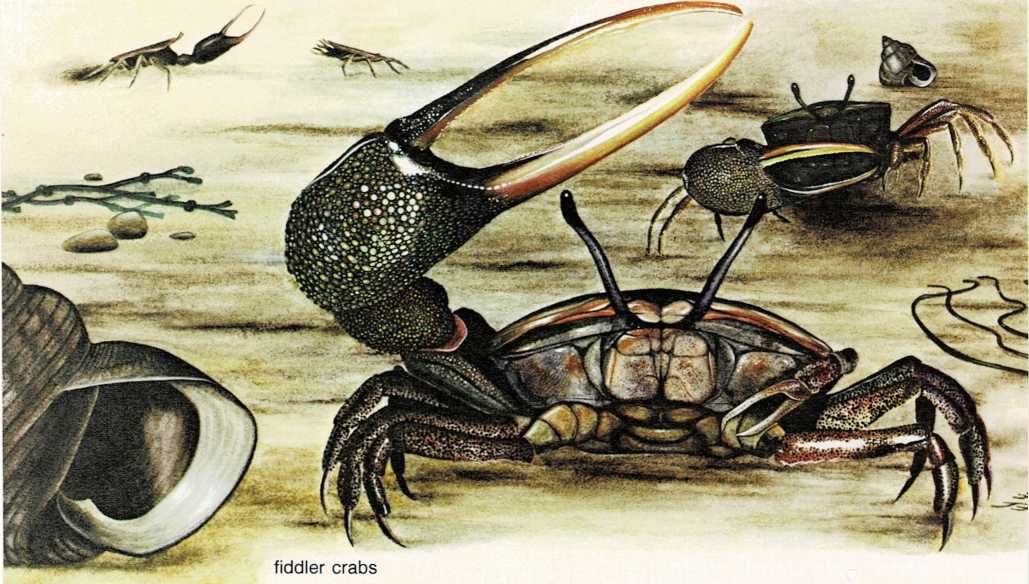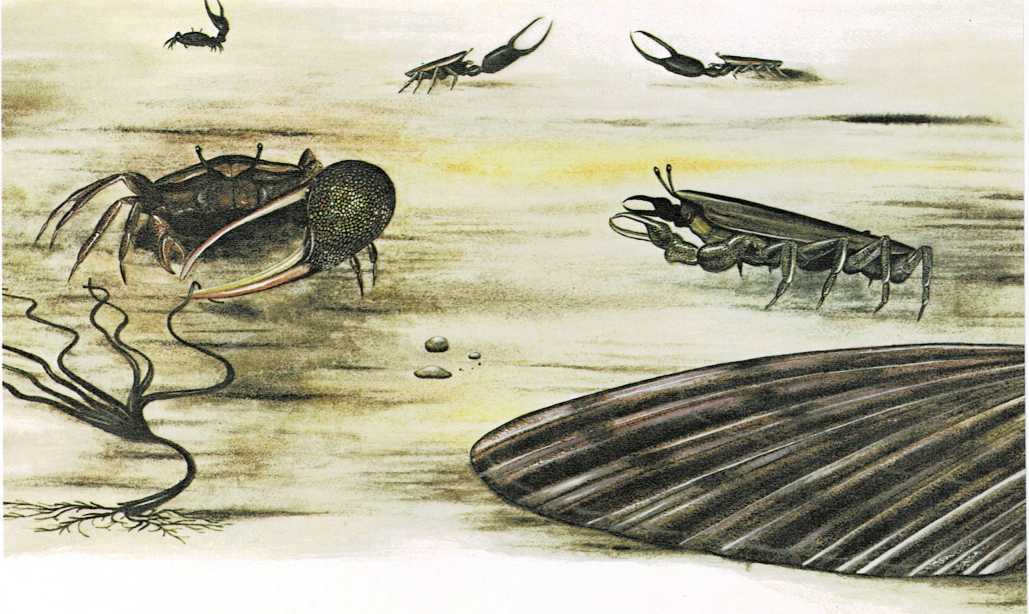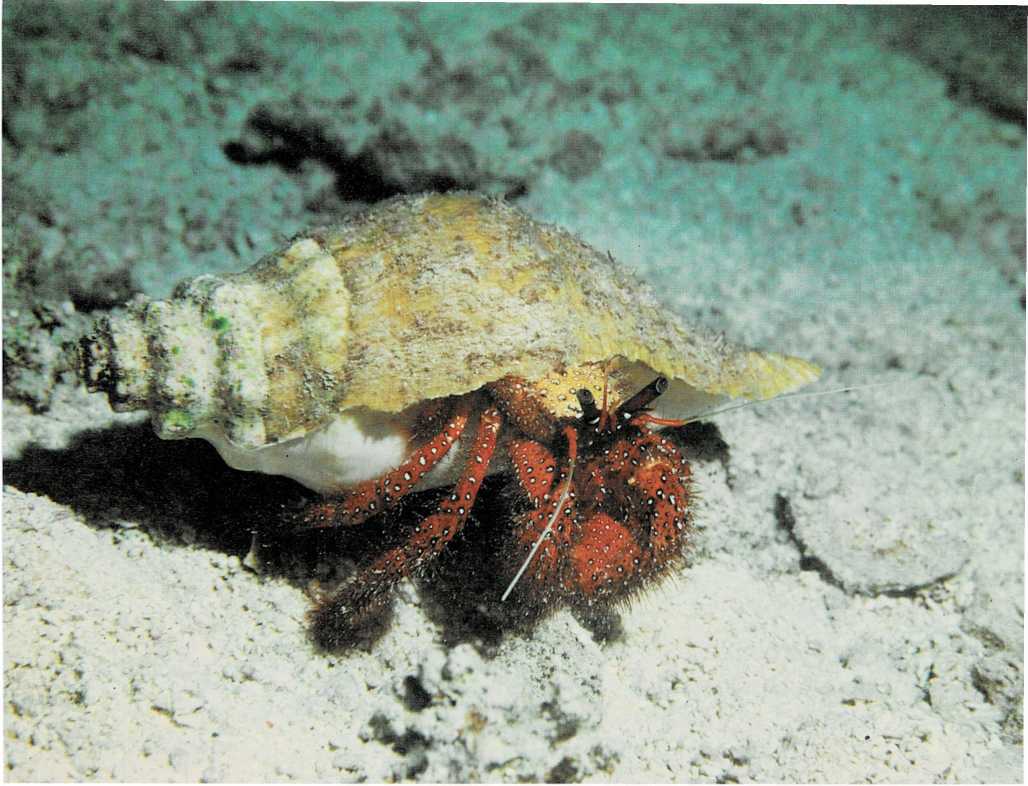
All kinds of crabs
Someone who is grouchy is often called a \”crab.” That doesn’t seem fair
to the real crabs. There’s no reason to think that any of them are
grouchy! In fact, they’re a big family with many odd and interesting
ways. Some crabs decorate themselves, some run \”races” with each other,
and some even seem to play jokes on one another!
Most crabs have rather round, flattened bodies with eight legs and two
\”arms” with claws on them. Their eyes are usually on long stems. Of
course, like other crustaceans, their bodies are covered with a hard
shell.
Fiddler crabs got their name because the males often sit in front of
their burrows waving one claw in the air. They look as if they are
playing a fiddle. These crabs are little creatures, only about an inch
(2.5 centimeters) wide.

As babies, fiddler crabs spend all their time in water. Then, they come
out of the water and up onto a beach. There, just at the edge of the
water, they dig a burrow in the mud or sand. Large numbers of fiddler
crabs always live together in \”villages.”
When the tide is low and there are no waves rushing up onto the beach,
the fiddler crabs come out of their burrows to feed. The wet sand is
filled with tiny plants and animals carried ashore by the waves. The
crabs scoop up chunks of food-filled sand with their claws and stuff
them into their mouths.
Each fiddler crab has a small territory near its burrow where it hunts
for food. If a male fiddler crab comes into the territory of another
male, there’s usually a fight! But no one gets hurt—the loser simply
runs away.
Before the tide comes back in, each fiddler crab cuts out a circle of
mud with its claw. It carries this to its burrow. The crab then

This hermit crab has the back part of its body inside an empty snail
shell. As the crab walks along, it carries the shell with it.
backs into the burrow, pulling the plug of mud after it. The mud seals
up the entrance and hides the burrow. When the waves roll in, the crab
is snug and safe inside its home.
A scientist once saw a fiddler crab apparently play a joke on another
crab that had just sealed up the entrance to its burrow. No sooner had
the crab pulled its plug of mud into place than another crab, who had
been watching, ran up, pulled out the plug, and ran away!
The two claws of female fiddler crabs are the same size. But the males
have one large claw and one smaller one. The large claw is often as big
as the crab’s whole body. This big claw is the one the male waves while
sitting at the entrance to its burrow. Scientists think that the males
do this to attract females, and to signal other males to stay away from
their territory.
As you might guess from its name, the kind of crab called a hermit crab
lives by itself. The hermit crab doesn’t dig a burrow. It lives in an
empty sea shell! Sometimes it even decorates the shell by attaching
pieces of sponge to it. Or, it may put the kind of animal called a sea
anemone on top of the shell. Hermit crabs do this to disguise the shell.
Of course, as a hermit crab grows it often becomes too big for its
shell. Then it has to go \”shopping” for a new one. But it doesn’t take
just any old shell. It’s very fussy about what it wants. When it finds
an empty shell, it feels it, turns it over, and really \”tries it out”
before deciding to move in.
One kind of tiny crab is called an oyster crab. This crab lives inside
an oyster shell, with the oyster. It hardly ever leaves. The oyster crab
lives on some of the food that the oyster pulls into its shell.
There are also ghost crabs. These little creatures run about on beaches
at night. They often seem to be running races with each other. Their
pale gray color blends in so well with sand that when they stop they
seem to disappear.
These are only a few of the more than four thousand kinds of crabs.
There also are blue crabs, green crabs, rock crabs, and spider crabs.
And, as you may know, many kinds of crabs are good to eat.

